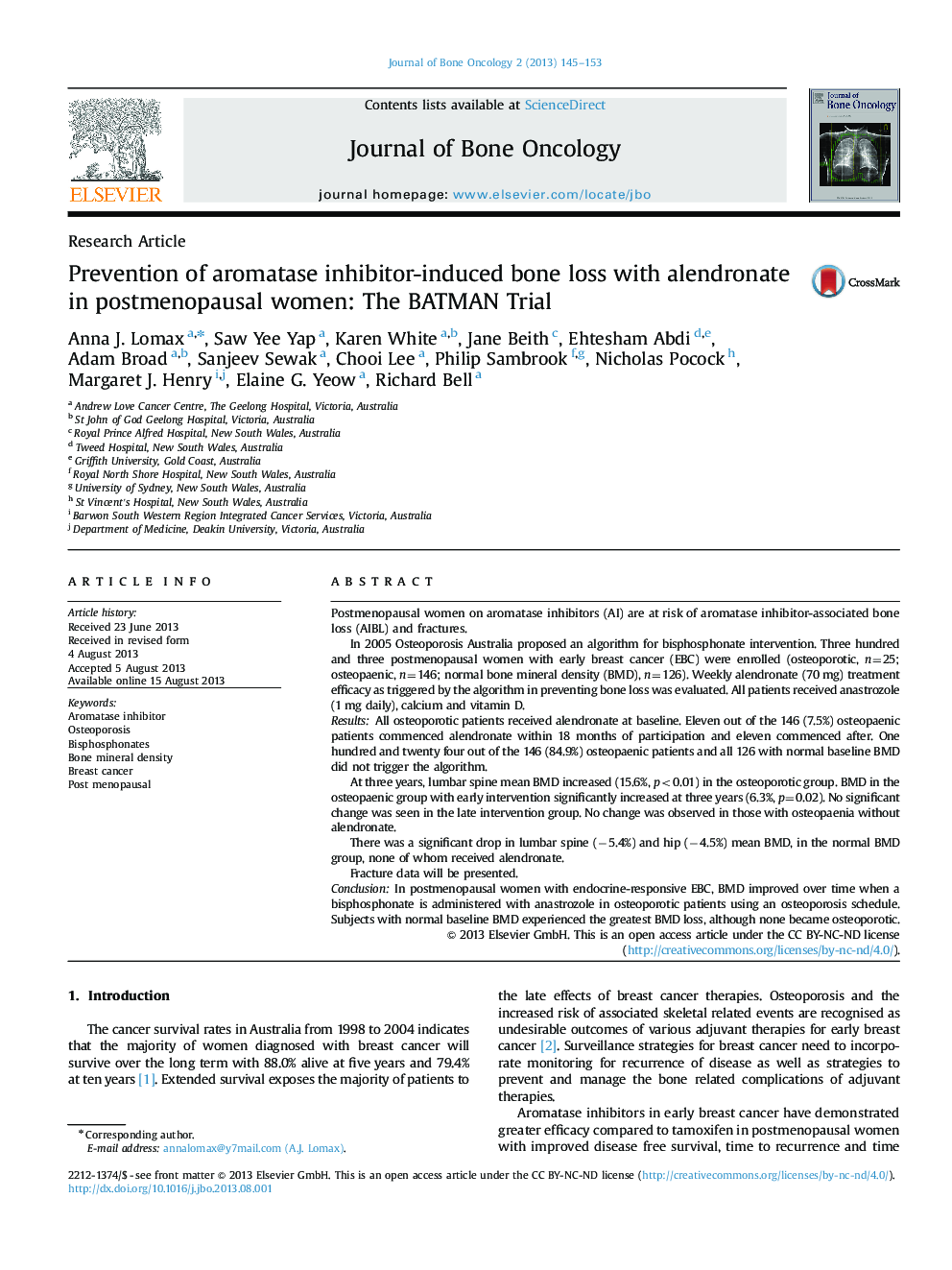| Article ID | Journal | Published Year | Pages | File Type |
|---|---|---|---|---|
| 2136230 | Journal of Bone Oncology | 2013 | 9 Pages |
Postmenopausal women on aromatase inhibitors (AI) are at risk of aromatase inhibitor-associated bone loss (AIBL) and fractures.In 2005 Osteoporosis Australia proposed an algorithm for bisphosphonate intervention. Three hundred and three postmenopausal women with early breast cancer (EBC) were enrolled (osteoporotic, n=25; osteopaenic, n=146; normal bone mineral density (BMD), n=126). Weekly alendronate (70 mg) treatment efficacy as triggered by the algorithm in preventing bone loss was evaluated. All patients received anastrozole (1 mg daily), calcium and vitamin D.ResultsAll osteoporotic patients received alendronate at baseline. Eleven out of the 146 (7.5%) osteopaenic patients commenced alendronate within 18 months of participation and eleven commenced after. One hundred and twenty four out of the 146 (84.9%) osteopaenic patients and all 126 with normal baseline BMD did not trigger the algorithm.At three years, lumbar spine mean BMD increased (15.6%, p<0.01) in the osteoporotic group. BMD in the osteopaenic group with early intervention significantly increased at three years (6.3%, p=0.02). No significant change was seen in the late intervention group. No change was observed in those with osteopaenia without alendronate.There was a significant drop in lumbar spine (−5.4%) and hip (−4.5%) mean BMD, in the normal BMD group, none of whom received alendronate.Fracture data will be presented.ConclusionIn postmenopausal women with endocrine-responsive EBC, BMD improved over time when a bisphosphonate is administered with anastrozole in osteoporotic patients using an osteoporosis schedule. Subjects with normal baseline BMD experienced the greatest BMD loss, although none became osteoporotic.
